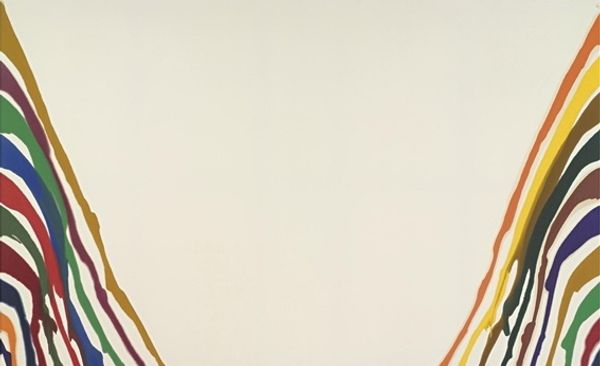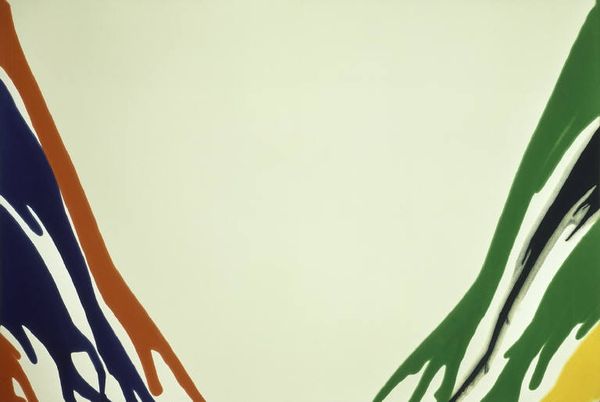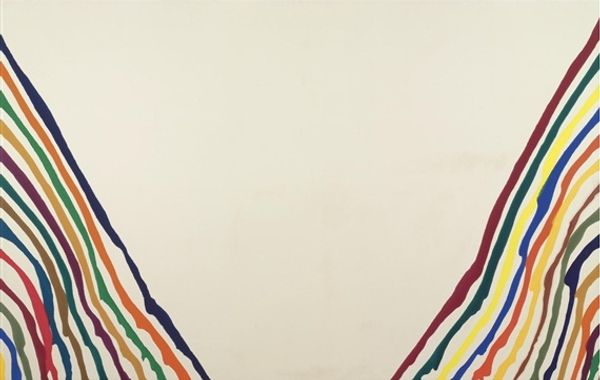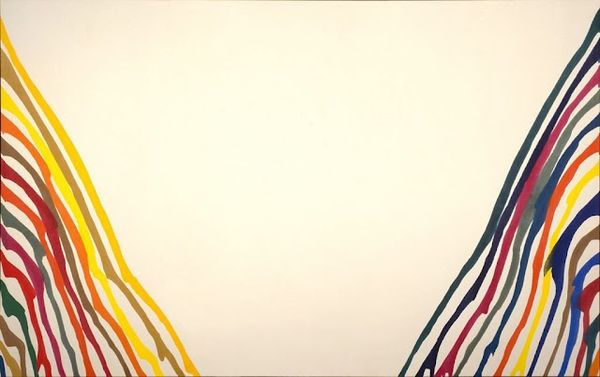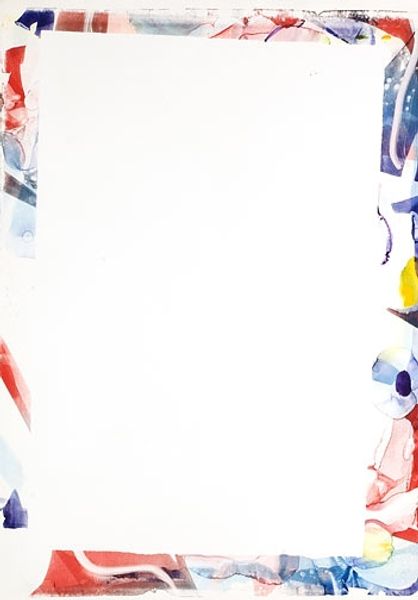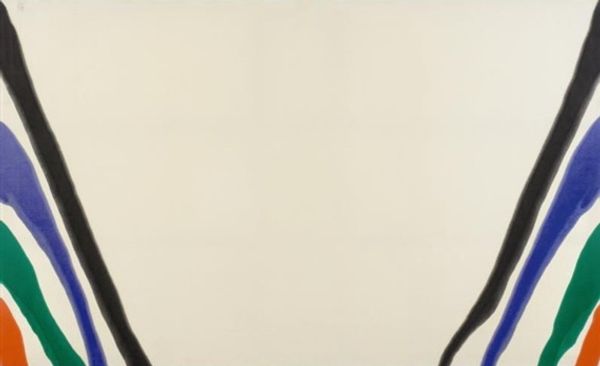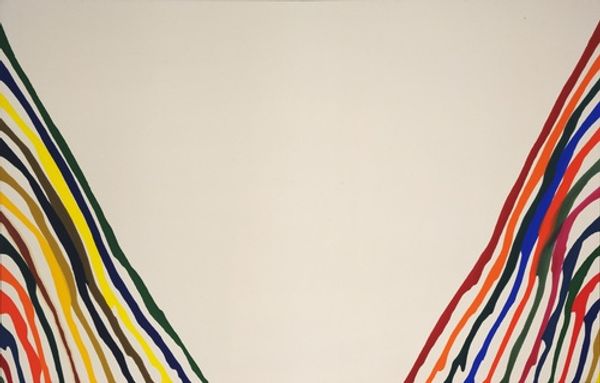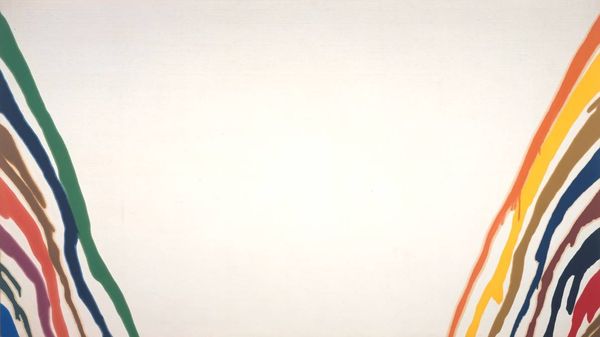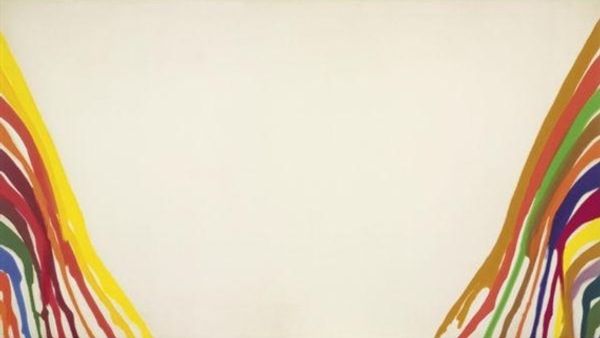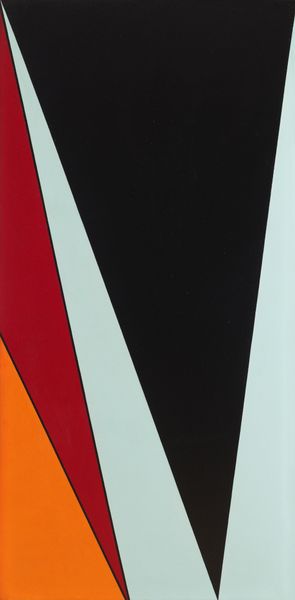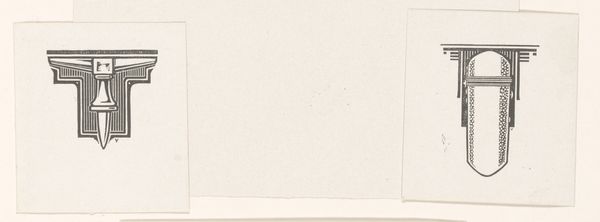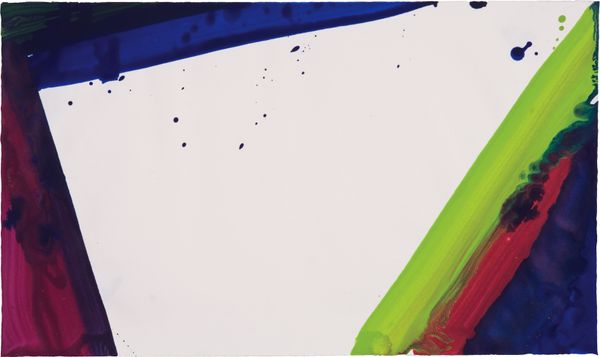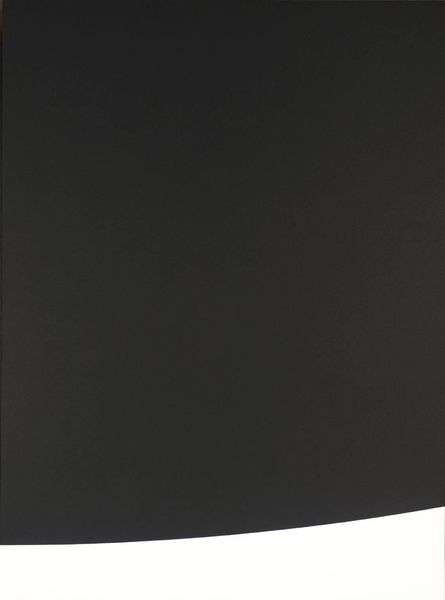
acrylic-paint
#
abstract-expressionism
#
washington-colour-school
#
abstract expressionism
#
abstract painting
#
non-objective-art
#
colour-field-painting
#
acrylic-paint
#
abstraction
#
line
#
abstract art
#
modernism
Dimensions: overall: 262.3 x 439.4 cm (103 1/4 x 173 in.) framed: 265.5 x 442 x 4.4 cm (104 1/2 x 174 x 1 3/4 in.)
Copyright: National Gallery of Art: CC0 1.0
Morris Louis created "Beta Kappa," a large-scale acrylic on canvas, during the Color Field movement which began in the 1940's in the United States. At first glance, one might see colorful, symmetrical abstraction. However, "Beta Kappa" also reflects the political and social dynamics of its time. During the Cold War, abstract art became a symbol of American freedom, contrasting with the Soviet Union's mandated social realism. Furthermore, Louis, who was born to Russian-Jewish immigrants, may have been influenced by his cultural background. The flowing, vibrant colors could be seen as a celebration of cultural diversity. What I find most striking about this painting is the use of negative space. The untouched canvas becomes as important as the painted areas, inviting us to reflect on absence and presence, silence and expression. The idea that what is not there can be as powerful as what is. In this way, "Beta Kappa" transcends pure abstraction, inviting us to consider broader questions about identity, expression, and the unspoken narratives that shape our perceptions.
Comments
No comments
Be the first to comment and join the conversation on the ultimate creative platform.
